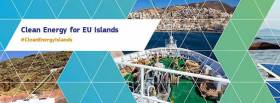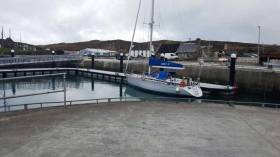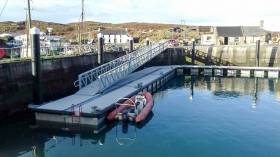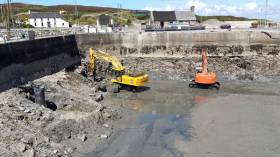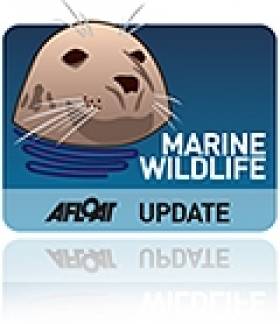Displaying items by tag: Cape Clear
Cape Clear Among 26 European Islands to Launch Clean Energy Transition
Today, 26 European islands have officially launched their clean energy transition with the support of the European Commission’s Clean Energy for EU Islands Secretariat.
In a first phase, 6 islands, the Aran Islands (Ireland) Cres-Lošinj (Croatia), Sifnos (Greece), Culatra (Portugal), Salina (Italy) and La Palma (Spain) will develop and publish their clean energy transition agendas by summer 2019.
"This is an important breakthrough for the Island which also sees electricity vehicles being used for public transport from Summer 2019", Cape Clear's Seamus Ó Drisceoil told Afloat.ie
The other 20 islands will do so by summer 2020. These islands are:
• Hvar, Croatia • New Caledonia, France • Pantelleria, Italy • A Illa de Arousa, Spain
• Brač, Croatia • Crete, Greece • Azores, Portugal • Gotland, Sweden
• Korčula, Croatia • Samos, Greece • Ibiza, Spain • Öland, Sweden
• Kökar, Finland • Cape Clear, Ireland • Mallorca, Spain • Orkney, UK
• Marie-Galante, France • Favignana, Italy • Menorca, Spain • Scottish Islands, UK
"European Commission initiative kick-starts energy transition process with islands to support them in becoming more self-sufficient, prosperous and sustainable"
Dominique Ristori, Director-General for Energy at the European Commission, said:
“The 26 islands selected display a remarkable potential and enthusiasm for developing strong and lasting multi-stakeholder collaborations around the clean energy transition. By embarking on this path, not only will they become more energy self-reliant and prosperous, but also provide inspiring examples for other islands and Europe as a whole. This in turn will help the EU achieve its ambitious climate and energy targets.”
There are more than 2200 inhabited islands in the EU. Despite having an abundance of renewable sources of energy, such as wind, solar and wave energy, many of them currently depend on expensive fossil fuel imports for their energy supply. The clean energy transition can help islands not only become more self-sufficient and prosperous, but also unlock new employment opportunities in their communities.
The objective of the Clean Energy for EU Islands Secretariat is to help as many European islands as possible embark on and advance their clean energy transition in a way that includes the whole island and its stakeholders. Based on experience with successful transition processes, the key to success is to involve all levels of governance of the islands - citizens, municipalities, local businesses, universities and schools – as well as relevant stakeholders from the mainland and bring them on board to actively support and shape their own transition.
Croatian MEP Tonino Picula said: "Islands are becoming more and more visible on the European agenda. The support for 26 islands throughout the Union is an important step in making island communities torchbearers in clean energy transition. This is a first, but an important, step in securing permanent EU assistance to islands. Congratulations to everyone!"
The 26 islands were selected based on their potential for establishing a high-quality transition process with the support of the Secretariat. In order to serve as inspiring examples for as many European islands as possible over the coming years, special attention was paid to including islands covering a broad variety of geographic and contextual conditions.
Storm Gates 'Malfunction' on Cape Clear Island (UPDATED)
The storm gates on Cape Clear Island in West Cork have malfunctioned and the island ferry has been stranded inside the harbour.
"We are undergoing a bit of a crisis at the moment as a result," according to the islanders who are dependent as a result on small boats to provide transport or supplies until the situation is resolved.
"We have received every possible help and support from our local fellow operators and service providers which is greatly appreciated but it is nevertheless a very difficult situation," they say.
The Cape Clear Ferry Company has issued this statement about the Storm Gates malfunction:
On Wednesday morning, 18 April the Cape Clear Ferry, Dún Aengus was berthed at her overnight station inside the recently installed Storm Gates, designed to protect the inner harbour. Unfortunately, during the opening of the gate, operated hydraulically one of the stainless steel pipes burst leading to a loss of oil pressure and the gates remained closed, thus trapping the ferry inside. Given the nature of this marine standard equipment, sourcing spare parts and replacement oil will take some days at the earliest.
At this time of the year the Island’s main Ferry, Dún an Óir 11 is undergoing her annual survey and is not available for service.
We are very grateful to our good friend Nic Slocum of West Cork Whalewatch who agreed to provide an unofficial relief service on Wednesday at extremely short notice and arrangements have been made to provide an emergency service from today, Thursday 19th using our own 12 passenger vessel, Deep Star. Since this vessel has very limited passenger capacity, multiple trips will be required at peak times, possibly leading to delay’s and lack of cargo capacity is obvious. We are very grateful also to the Ro Ro service operated by Vince Ó Driscoll which will make a run to Cape Clear at 2pm today bringing both heavy and light cargo and with a license also for 12 passengers.
Intending passengers are asked to contact us by text or email, especially at peak times where lists of bookings will be taken for multiple trips. By doing this, we hope to avoid or reduce long delays. We ask all service users to check our Facebook page and website regularly for sailing updates and where possible, trips that can easily be postponed would be a great help to us.
We also thank the wonderful staff at Fields Supermarket for their legendary cooperation and forbearance and indeed to all the wonderful local people on the Island and elsewhere who have offed every possible help and assistance to us and to one another.
Cape Clear – A New Boating Marina on the West Cork Coastline
South Harbour in Cape Clear is a favourite anchorage of mine. There are other beautiful West Cork locations - Schull, Baltimore, Crookhaven, Glandore and Kinsale to be enjoyed, but I have really loved a calm, moonlit night lying at anchor in South Harbour as a very special experience.
North Harbour on the other shore of Cape is more popular because of the onshore facilities there, but also more crowded and often difficult to find space there.
“The island is hopeful of a good response from the sailing community”
However, all that is changing, with a new marina provided, I am told, by the Department of the Marine, where work is ongoing this week installing power points, with plans for water availability onto the marina. The Island Co-op premises is being upgraded to provide clothes washing and drying and the FLAGS development programme where financial support is given through Fishing Local Area Groups, administered by Bord Iascaigh Mhara, is going to fund shower facilities for marina users.
“The island is hopeful of a good response from the sailing community,” I was told this week “’’’ and diesel is available, petrol also and the pubs and restaurants are well set-up.”
 Nic Slocum's Whale Watching boat at the new Cape Clear pontoon
Nic Slocum's Whale Watching boat at the new Cape Clear pontoon
Two early visitors to the marina were Neil Prendeville from Kinsale Yacht Club who brought his Mary P there this week… “three metres depth at low water” he told me.. …. An observant and dedicated sailor he suggested the installation of “better cleats for yachts…” and said it was great to see the facilities that will encourage more yachts to visit this Summer.
Also berthed there in the past week was Nic Slocum’s West Cork Whale Watching vessel.
That’s another marina on the West Cork coastline to add to Bantry from last year and, with the granting of €112,000 from the Department for the installation of a pontoon at Schull, perhaps - at last – official appreciation is growing of the jewel which West Cork provides for marine tourism.
Listen in to the podcast here:
Cape Clear Harbour Pontoons in Place, New Facility for West Cork Coast
Marina pontoon installation work has been installed at Cape Clear Island's North Harbour where pontoons to the value of €200,000 are now in place at the West Cork island harbour.
As our pictures below show the new facility is a welcome addition in the popular harbour for both commercial and leisure craft. It's another valuable asset for boaters exploring the sailing wonders of West Cork.
The facility was installed by leading Irish pontoon supplier, Inland and Coastal Marina Systems Ltd.
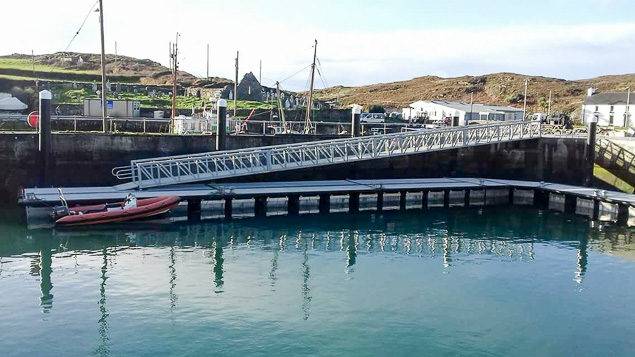
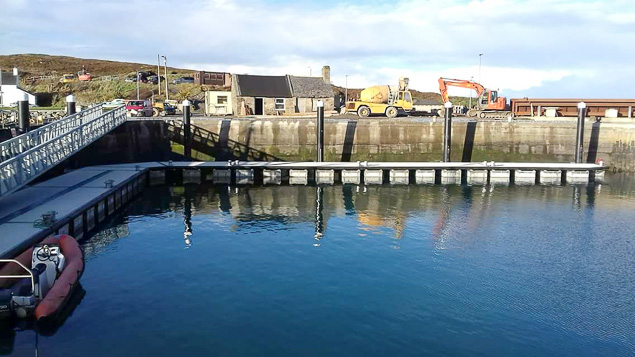
Under the 2017 fishery harbour and coastal infrastructure capital programme, Junior Minister Andrew Doyle told the Dail Harbour's debate in June he had allocated €720,000 for maintenance and development works at the Island's North Harbour.
'The 2017 programme provides €200,000 for pontoons at Cape Clear and €250,000 for the design, preparation of contract documents and planning for additional repair work to Duffy's Pier' he said.
Read more on the works in our July report here.
Marina Pontoon Works Underway at Cape Clear Island
Marina pontoon installation work is well underway at Cape Clear Island's North Harbour where pontoons to the value of €200,000 have been procured for the West Cork island harbour.
Under the 2017 fishery harbour and coastal infrastructure capital programme, Junior Minister Andrew Doyle told the Dail Harbour's debate in June he had allocated €720,000 for maintenance and development works at the Island's North Harbour.
'The 2017 programme provides €200,000 for pontoons at Cape Clear and €250,000 for the design, preparation of contract documents and planning for additional repair work to Duffy's Pier' he said.
Read more on the works in our June report here.
Pictures of Island Life on Cape Clear, West Cork
It may be just three miles long by one mile wide but there's heaps of maritime activity on Ireland’s southern most inhabited Gaeltacht island, Cape Clear.
Removed from the hustle and bustle of mainland life, Cape Clear offers relaxation, nature and peace. Photographer Bob Bateman captured exactly that (see images below) on a recent visit to the rugged and remote island, eight miles off the coast of West Cork.
Cape Clear’s remote island location, coupled with its proximity to the continental shelf, makes it a foremost centre for bird watching in Ireland. It is also a marine widlife haven with Whales, leatherback turtles, sun fish, dolphins and sharks are spotted regularly every year.
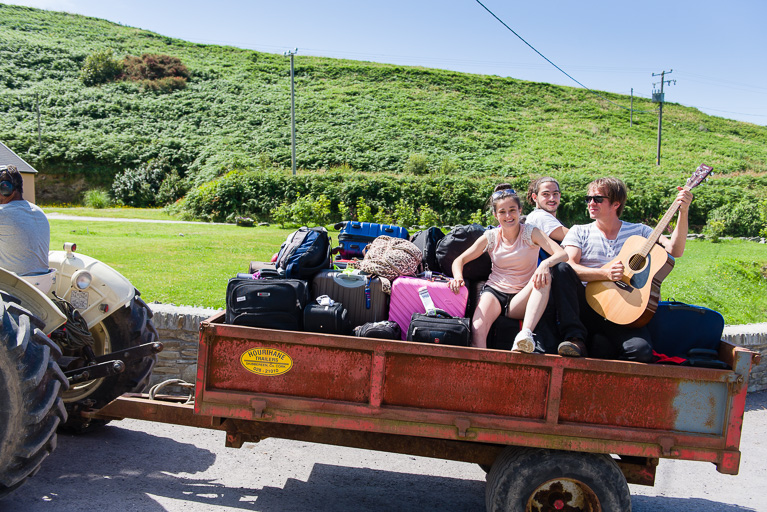
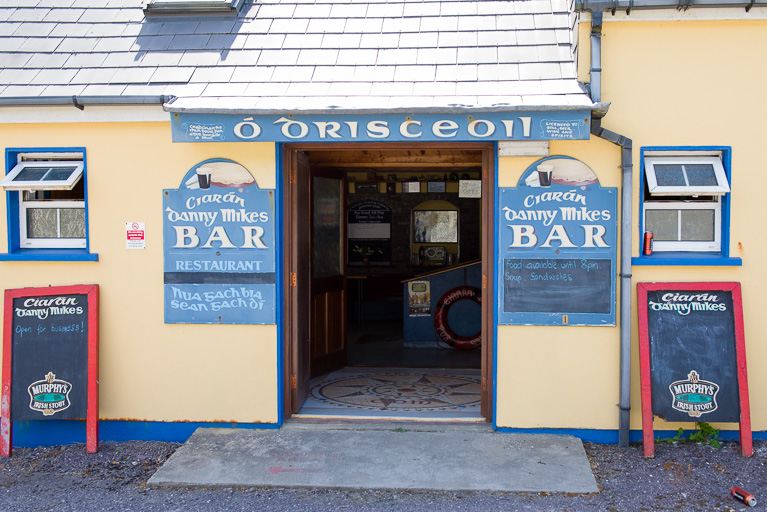

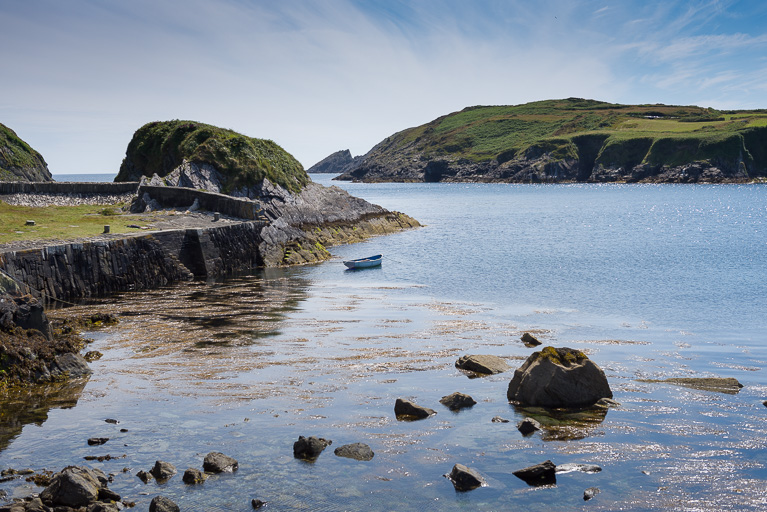
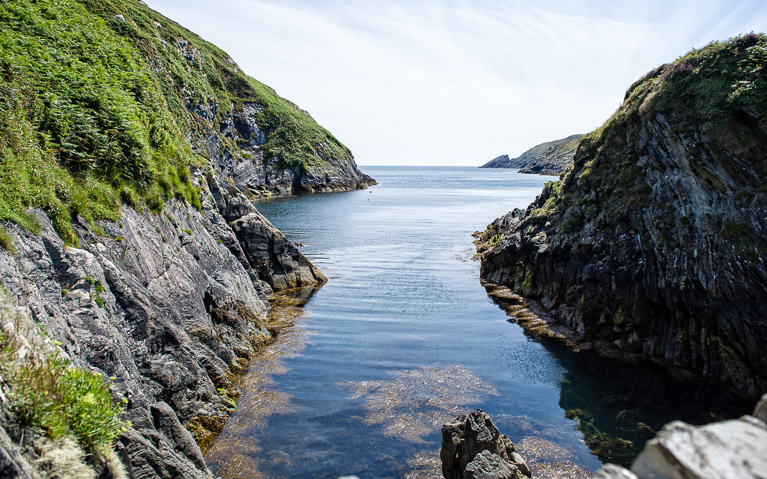
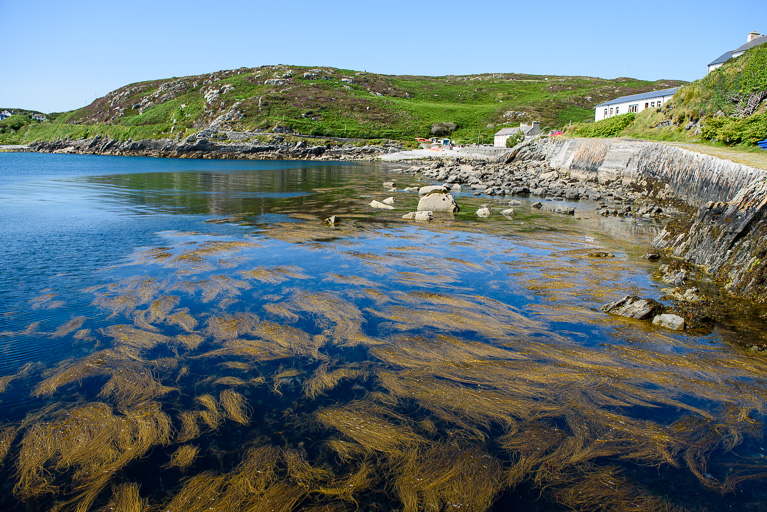
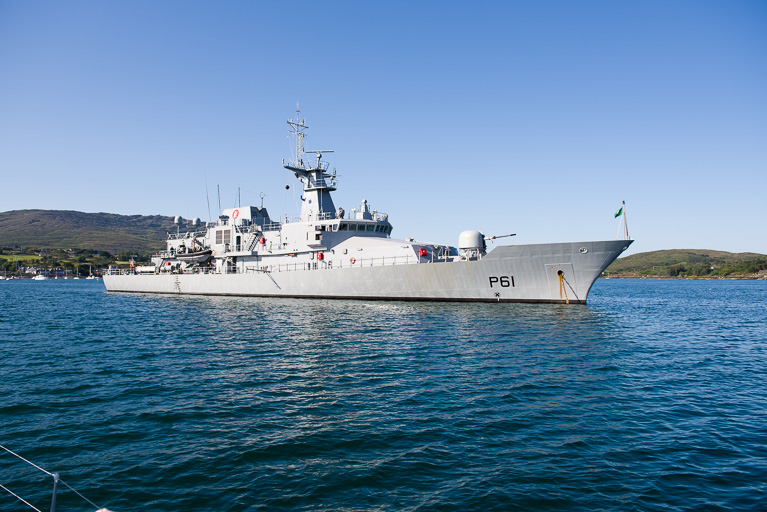

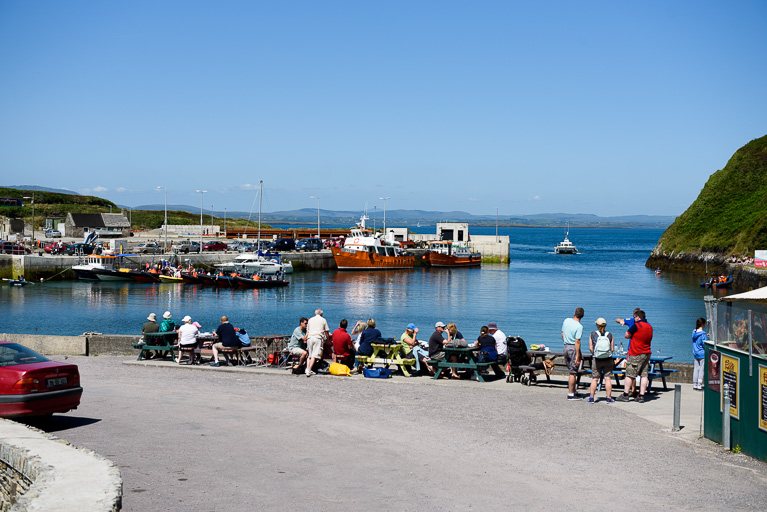
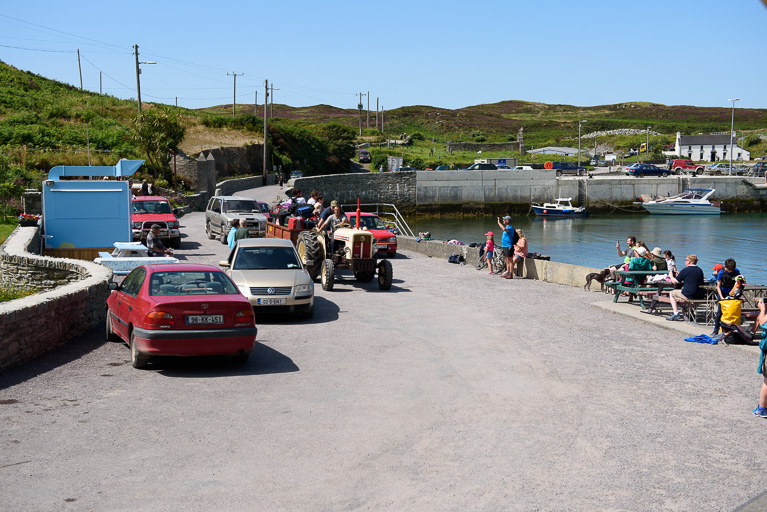
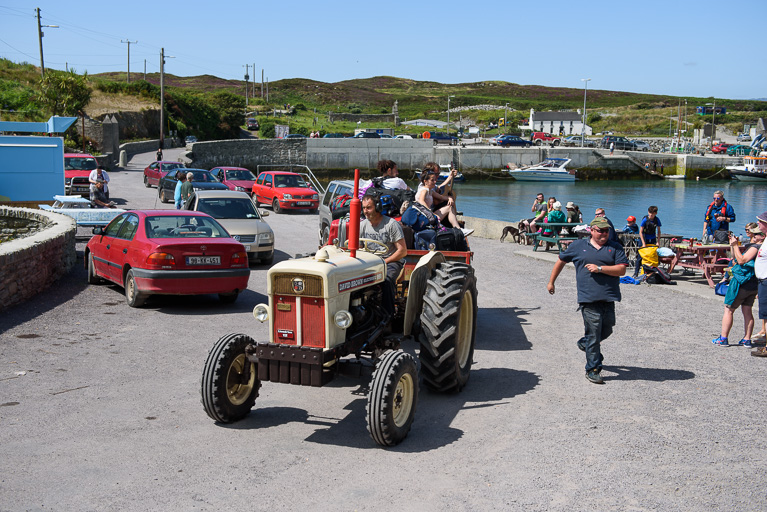
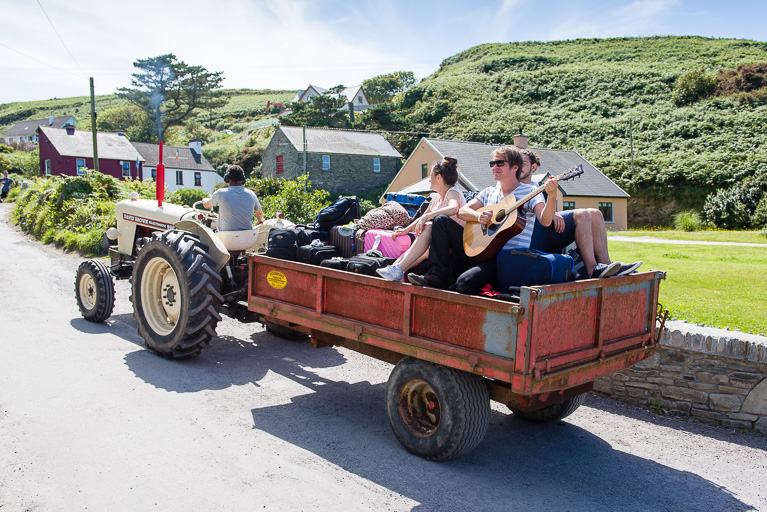

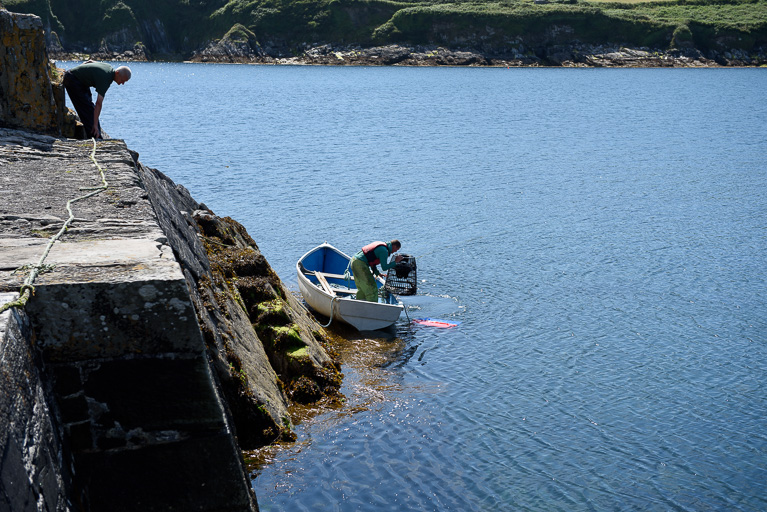
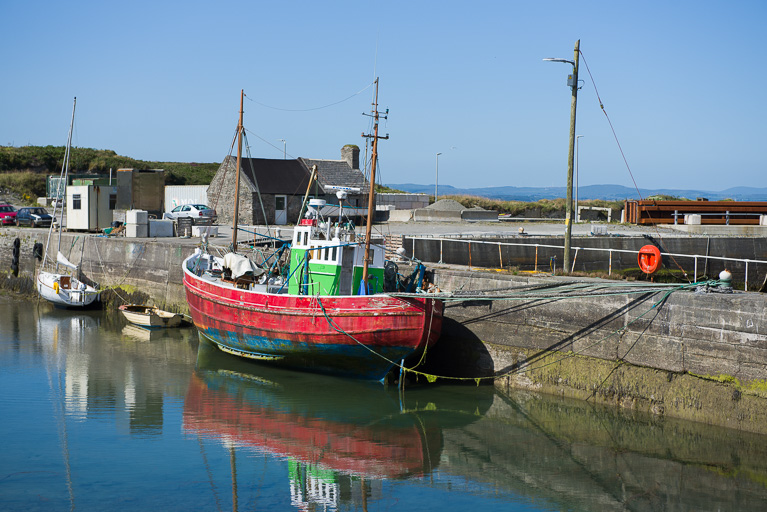


€200,000 Cape Clear Pontoons On the Way for West Cork Island
The good news for West Cork boaters is that the €200,000 pontoons procured for Cape Clear island's North Harbour will be installed this Summer. And as our photo taken this week shows there's little doubt that they will be put to immediate use.
Under the 2017 fishery harbour and coastal infrastructure capital programme, Junior Minister Andrew Doyle told the Dail Harbour's debate in June he had allocated €720,000 for maintenance and development works at the Island's North Harbour. 'The 2017 programme provides €200,000 for pontoons at Cape Clear and €250,000 for the design, preparation of contract documents and planning for additional repair work to Duffy's Pier' he said.
After storm damage wrecked the coastal infrastructure there, construction work has been underway at Cape Clear island since 2014. As Afloat previously reported in March that year, the works have involved the construction of a slipway; replacement of the Bull's Nose structure incorporating a storm gate and an extension to the end of Duffy's Pier; excavation, dredging and reclamation works including the construction of an armoured embankment at the seaward side of the new Bull's Nose structure.
It is expected the Duffy’s Pier preparatory work will also be completed in 2017. However, further work will be subject to permission and funding in future years.
€18m in Fishery Harbour Works Announced
Pontoons in Cape Clear, West Cork a small craft harbour in Killybegs, County Donegal and dredging works in Howth, County Dublin are part of an €18m Capital Investment Package in 2016 for the development of Ireland’s fishery harbour network announced today by Minister for Agriculture, Food and the Marine, Simon Coveney T.D. See the full table below.
Announcing the investment package, the Minister said “In total I am allocating €18m for this year's Fishery Harbour and Coastal Infrastructure Capital Programme. I have set aside €16m towards safety, maintenance and new development works at the six Fishery Harbour Centres at Howth, Dunmore East, Castletownbere, Dingle, Rossaveel and Killybegs. I am also making €2m available for a Local Authority Harbour Programme, and I am assessing specifically what is required to address storm damage at Local Authority owned fishery harbours.”
Flagship projects in the 2016 Capital Programme (see table1) include the provision of dedicated Ferry pontoons on the West Pier in Howth, infrastructure upgrades in Dunmore East, commencement of the Dinish Wharf expansion Project in Castletownbere, expansion of the small craft harbour in Ros an Mhíl and the Smooth Point pier extension in Killybegs. The Minister continued, “While there are a number of flagship projects for completion this year, of equal importance is the preparatory work for significant potential projects in Howth, Dunmore East, An Daingean and Ros an Mhíl”
The 2016 Fishery Harbour and Coastal Infrastructure Capital Programme outlined by the Minister also contains funding of €2m to assist coastal Local Authorities repair, maintain and develop piers, harbours and slipways under their ownership. The Minister stated “I am delighted to continue to support Local Authorities in their efforts to maintain and develop the fishery harbour network which provides much needed facilities for our rural fishing and marine focussed communities. A number of smaller fishing piers around the coast experienced some damage during the recent storms and we are currently assessing how best to assist Local Authorities in carrying out repairs”
Concluding on the 2016 Fishery Harbour and Coastal Infrastructure Capital Programme, the Minister said “This year’s programme is significant on a number of fronts, firstly it provides for the continuation of this Governments strategy to develop and improve the facilities at our fishery harbours in 2016. Secondly it prepares the groundwork for potential projects in the coming years all of which will benefit the fishing industry, seafood processing sector, other ancillary marine industries.”
Table 1- Fishery Harbour & Coastal Infrastructure Development Programme 2016
| Location | Project | Cost €m |
|
Howth: |
- Traffic Management Works - East Pier Repairs - Pontoons to west pier for ferry landings - Engineers office - Preparation of Dumping at Sea licence - Provision of Berthing Face to Middle Pier - Electric Works West Pier - Gas Main - Other Services (Sewers,ducting,watermains) Total |
0.150 0.050 0.400 0.050 0.100 0.100 0.300 0.150 0.150 1.450 |
|
Dunmore East: |
- Harbour Office Upgrade - West Wharf upgrade - Breakwater (Design Report) - Harbour Road re-surface Total |
0.700 0.200 0.160 0.100 1.160 |
| Castletownbere: |
- Harbour User toilet and Shower facilities - Dinish Wharf Expansion - Harbour Slipway - Quayside Electrical Upgrade - Harbour Offices Upgrade - Replacement of water network Dinish - Dinish Bridge Survey - CCTV Total |
0.090 1.000 0.040 0.150 0.250 0. 450 0.080 0.070 2.130 |
|
An Daingean:
|
- Workshop Design ,Planning and commence works - Capital Dredging Navigation Channel – Dumping at sea Licence, tender preparation and preparation works - Net mending area Total |
0.400 0.500 0.100 1.000 |
|
Ros an Mhíl:
|
- Quay Development – Design, Evaluations, Consulting, EIS, Permitting and preparation works - Small craft Harbour – Dredging Total |
0.800 1.800 2.600 |
|
Killybegs:
|
- Repairs to Blackrock/Auction Hall Piers - Small Craft Harbour - Smooth Point Pier Development - Landing Pier Fendering - Landing Pier Electrical Design/Works - Boatyard investment Total |
0.175 0.900 2.500 0.300 0.190 0.0 70 4.135 |
|
Cape Clear
|
-Pontoons Total |
400 0.400 |
| Total Departmental Owned Marine Infrastructure projects | €12.875 | |
| Safety and Maintenance and Non-Discretionary and Contractual Capital Commitments 2016 (incl Disability Access) | €3.120 | |
| Total Local Authority Harbour Development and Marine Leisure | €2.000 | |
| Total Fishery Harbour and Coastal Infrastructure Capital Programme |
€17.995
|
|
Baltimore Lifeboat Tasked With Medevac From Cape Clear Island
Baltimore RNLI received an an alert from Valentia Coastguard at 09:29 this morning when a young boy in urgent need of medical attention required immediate evacuation from Cape Clear Island.
Coxswain Aidan Bushe along with 5 volunteer crewmen were launched within minutes of the alert. They proceeded in poor weather conditions to the North Harbour of Cape Clear Island against a swell of 3 metres and force 6-7 northwest winds.
When the lifeboat crew arrived at the pier the little boy was unresponsive. He was immediately stretchered aboard the the lifeboat where he was constantly monitored on the journey back to Baltimore. The lifeboat arrived at Baltimore pier at 10:30, from where the boy was transferred to Skibbereen for medical attention.
The evacuation was successfully completed in one hour, a remarkable achievement given that current weather conditions have meant frequent cancellation of local ferries.
On board were ; Coxswain Aidan Bushe, Mechanic Cathal Cottrell, crew Sean McCarthy, Jerry Smith, Ronnie Carty and Don O'Donovan
Surprise Basking Shark Features In Cape Clear Documentary
#MarineWildlife - Do you remember the basking shark that surprised a group of bathers off Cape Clear last summer?
According to TheJournal.ie, it's now featured in a documentary shot on the fly by a team of quick-thinking filmmakers.
Aonrú, a film funded by Cork County Council and Bord Iascaigh Mhara, tackles the delicate subject of the West Cork island's future after the decline of the regional fishing industry.
But in the process of filming, they happened to be close by when the basking shark - the second-largest fish in the oceans – made its appearance, the solitary beast almost a metaphor for the island's dwindling community.
TheJournal.ie has more on the story HERE.



























